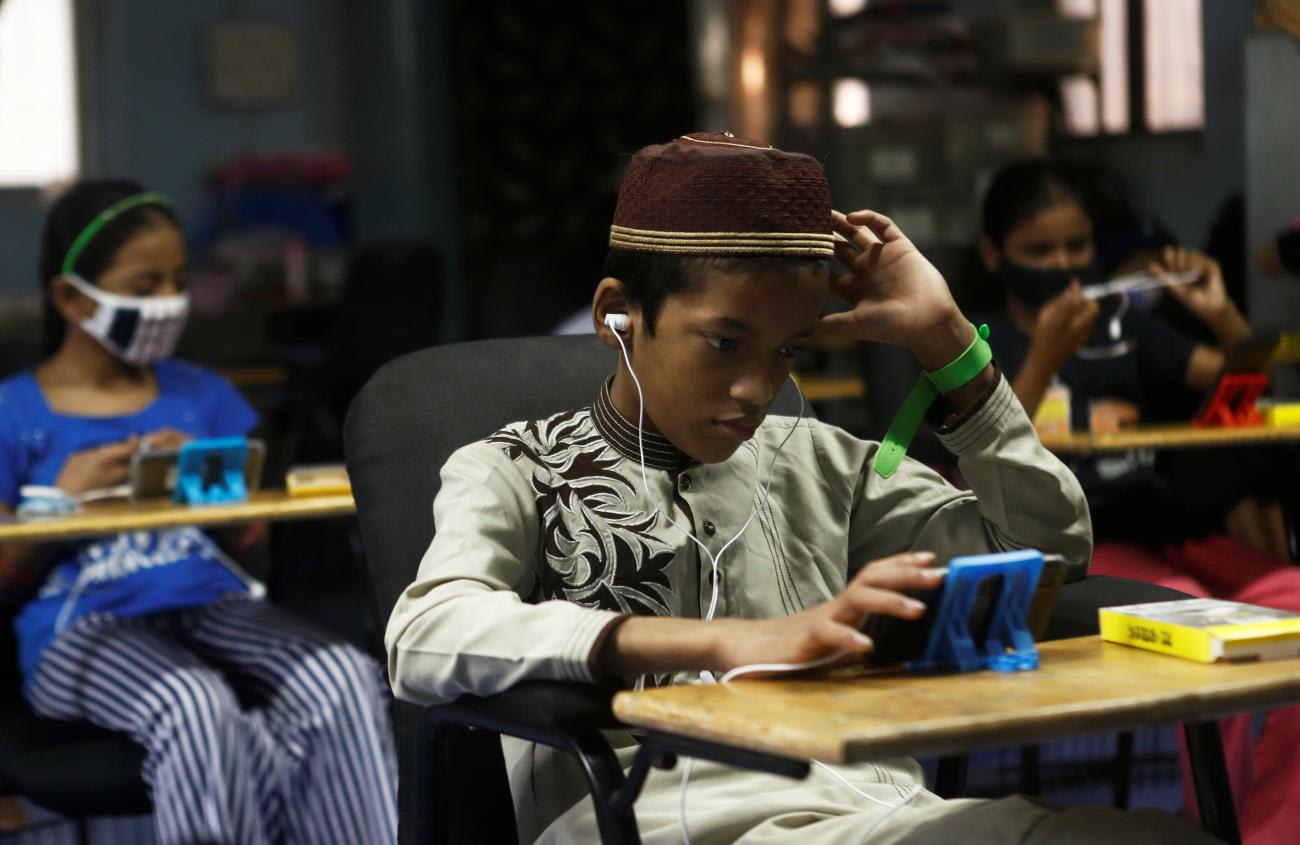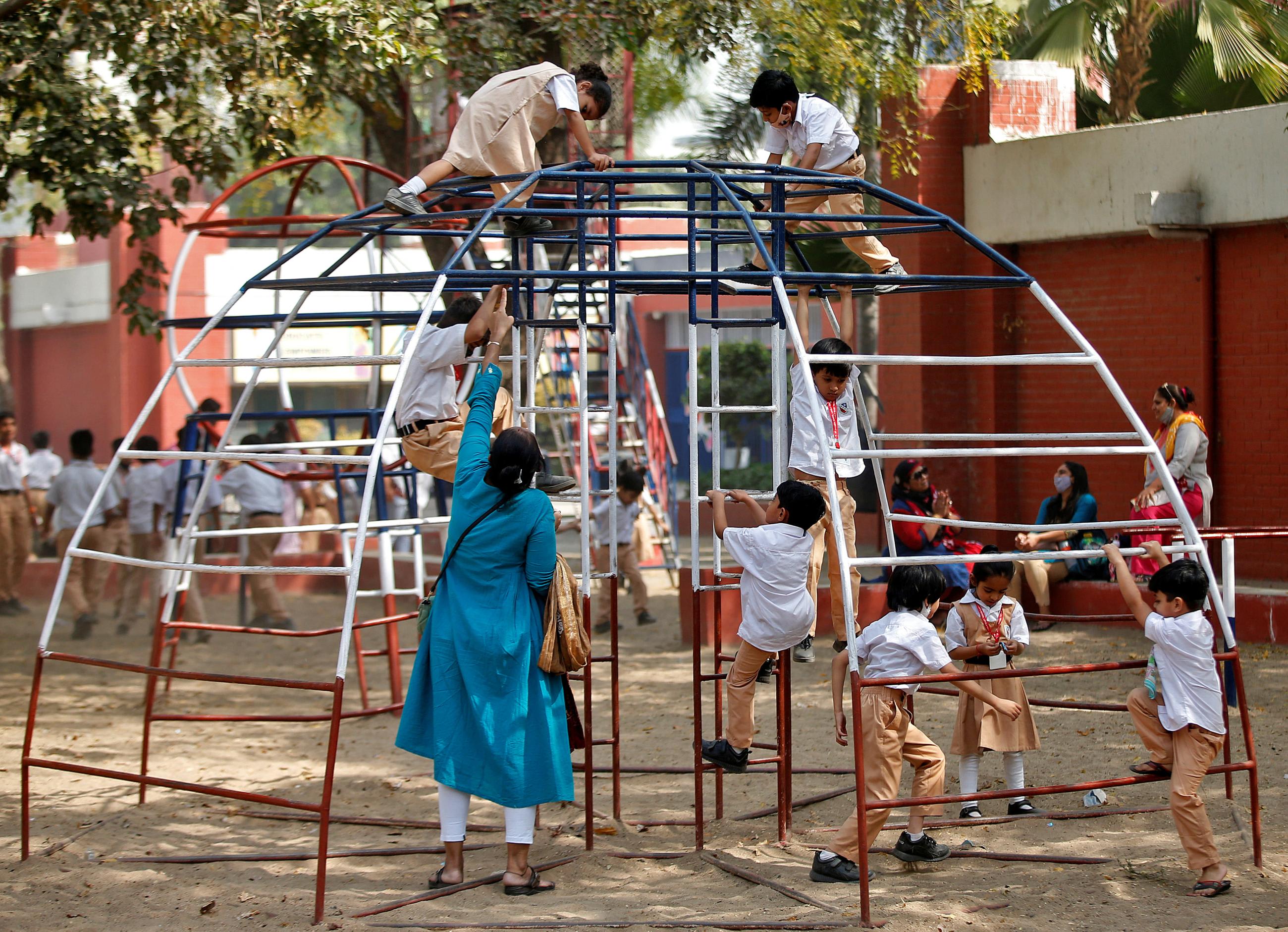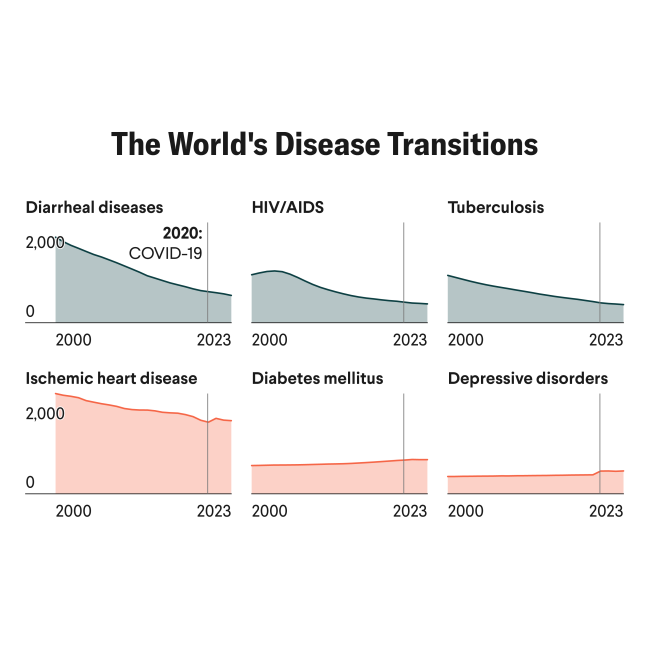As 10-year-old Aaditya Goswami holed up in his home during the COVID-19 pandemic, with an altered routine and decreased physical activity, he started gaining weight, soon turning obese. About a year ago, his father, Poorna, noticed that the boy, who before the pandemic enjoyed playing outdoors, was increasingly lethargic. He stayed glued to his screens and became irritable.
Poorna, a lawyer in the north Indian city of Mathura, consulted a pediatrician and realized that his son's changed behavior was due to his pandemic-induced obesity. Blood tests revealed that the child was prediabetic owing to his weight gain.
"He was 9 at the time, and we were very worried when we learned that he was at risk for developing diabetes," says Poorna, adding that the boy's ideal weight is 40 kilograms (88 pounds) but had increased to 57 kilograms (125 pounds) during the pandemic. "COVID made all the difference," Poorna says. "It changed the habits and lifestyles of kids. Go to the playground and check. There are no kids there anymore."
In the past few years, several studies have established a link between the COVID-19 pandemic and the global surge in childhood obesity. A July 2023 study involving two Indiana schools found a 9% increase in the prevalence of obesity among children, especially those ages 5 to 11, from 2019 to 2021. Similar observations were made in Australia, China, Sweden, Turkey, the United Kingdom, and other nations, which attributed the alarming rise in childhood obesity to several pandemic-related factors, including school closures, routine changes, sedentary lifestyles, excessive eating, irregular sleep, physical inactivity, and increased screen time among children.
Although the impact of the pandemic on childhood obesity is well established, little is known about the long-term consequences of this alarming rise
Although the impact of the pandemic on childhood obesity is well established, little is known about the long-term consequences of this alarming rise, which have now started manifesting as serious ailments among children in India. Vaishakhi Rustagi, a New Delhi–based pediatric and adolescent endocrinologist, tells Think Global Health that before the COVID-19 pandemic, she hardly treated one case of type 2 diabetes resulting from obesity among children. After the pandemic, she says, the incidence has "increased dramatically," with at least 18 to 20 such cases in the last two years. Her patients include a 6-year-old girl, who weighs 80 kilograms (176 pounds), and a 12-year-old boy, who weighs more than 100 kilograms (220 pounds).
"Because there was muscle disuse for almost two years during the pandemic, kids are experiencing muscle wasting and bone problems now. Hence, they cannot do much physical activity, further increasing the weight they gained during the pandemic," says Rustagi, "Now, in addition to the weight gain, they also have other ailments associated with obesity, such as type 2 diabetes, dyslipidemia, high cholesterol, and fatty liver."
Ahmed Sert, a pediatric specialist and one of the researchers behind a 2023 study in Turkey, which also concluded a direct relationship between the pandemic and childhood obesity, says that the condition has several long-term impacts on the physical as well as psychological health of children. Such children, he says, are at a higher risk of developing chronic diseases such as type 2 diabetes, cardiovascular diseases, asthma, hypertension, certain types of cancer, and orthopedic ailments such as arthritis and joint pain. Furthermore, childhood obesity can also lead to poor self-esteem, depression, and social isolation due to stigma and bullying.
"Childhood obesity is a global issue and its effects are not limited to specific regions," emails Sert, who specializes in pediatric allergy and immunology. He adds that only the rates of childhood obesity and its consequences may vary across regions "depending on factors such as socioeconomic status, access to health care, cultural norms, and dietary habits."
The Manifestations of Childhood Obesity
Think Global Health spoke with five doctors across India, all of whom report an alarming increase in pandemic-induced childhood obesity and its related comorbidities. Shiv Kumawat, a pediatrician in the north Indian city of Jaipur, says that following the pandemic, at least 1 in every 4 of his patients are now either overweight or obese—as opposed to 1 in about 20 children before the pandemic. Most of these overweight and obese children are now reporting obesity-associated complications, including constipation, sleep apnea, breathing difficulties, asthma, allergy rhinitis, and dermatitis.
"At least 15 to 20% of these overweight and obese kids are already asthmatic," says Kumawat, "Although I haven't seen many cases of type 2 diabetes and heart diseases yet, all these kids are at the risk of developing such diseases."

Similar trends have also been reported in the eastern Indian city of Kolkata, where, according to pediatrician Parichaya Bera, such cases have "more than doubled" in the recent past. Bera cites the case of a 13-year-old boy who became obese during the pandemic and now weighs around 85 kilograms (187 pounds). A few months ago, the boy's family approached the doctor after the adolescent developed an intestine infection. Bera, suspecting high sugar levels, had the boy undergo some tests, which revealed that he was diabetic.
"Type 2 diabetes is usually seen in adults over 35 years of age, but after the surge in childhood obesity during the pandemic, we are getting such cases much earlier now," says Bera.
Alok Sardesai, a Mumbai-based pediatric endocrinologist, has also noticed a substantial increase in complications such as type 2 diabetes resulting from pandemic-induced obesity among children. Diving into the cultural influences of weight gain, Sardesai says that childhood obesity thrives in India because families do not recognize it as a disease. He attributes this to India's history of child malnutrition, which, he says, lingered until two decades ago and made weight gain desirable. The same thought, he adds, persists today, and to ensure healthier children, the outlook toward obesity needs to change.
"People fail to distinguish normal weight gain with abnormal weight gain, and it is still appreciated when the child starts getting overweight and obese," says Sardesai.
Mitigating the Impact of Pandemic-Induced Childhood Obesity
A study published in the UK in January 2024 found "steep increases" in overweight and obesity prevalence among children during the pandemic in England. One of its researchers, Keith Godfrey, a professor of epidemiology and human development at the University of Southampton, tells Think Global Health that the economic impact of this rise in the UK would result in more than 8.7 billion British pounds in additional national health care as well as broadened economic and social costs. This, he says, is "hugely concerning" because health-care systems are ill equipped to handle the consequent burden of pandemic-induced childhood obesity.
"Mitigating the long-term effects of obesity in children likely requires a 'whole-systems' approach that addresses obesity at multiple levels simultaneously, including individual, family, community, environmental, and policy levels," Godfrey said in an email interview.
Health-care systems are ill equipped to handle the consequent burden of pandemic-induced childhood obesity
Keith Godfrey, University of Southampton
Rustagi, the pediatric and adolescent endocrinologist from Delhi, says that although the long-term impacts of childhood obesity have already started manifesting among children in India, perpetrating enduring complications, most parents continue to remain unconcerned with their children's weight gain and are irregular with their follow-ups. She cites the case of a teenage girl who attempted suicide due to obesity-related depression but did not continue with her medical treatment, adding that in India, awareness among families is the key to mitigating the long-term impacts of childhood obesity.
"Everyone talks about obesity in adults, but these children, who are our future, are going to become a real load on the country after a few years," says Rustagi.
The problem, however, goes beyond childhood obesity, says Smrithi Bhagirathi, a pediatrician in the south Indian city of Bengaluru, who reports a 30% increase in the incidence of childhood obesity since the pandemic. She says that the pandemic has led to a fall in the general health of children, both physical and emotional—and that the "general trend is towards unhealthier physical and developmental health among kids." The doctor, however, is optimistic about the future.
"Children are easily adaptable," she says, "So anything which has caused havoc can be reversed by improving their diet and encouraging them to play."
The same is also true in the case of 10-year-old Aaditya, who, with regular exercise and dietary modifications, has lost five of his 17 excess kilograms, bringing him closer to his ideal weight and a healthier future. "Slowly, he's getting better," says his father.













